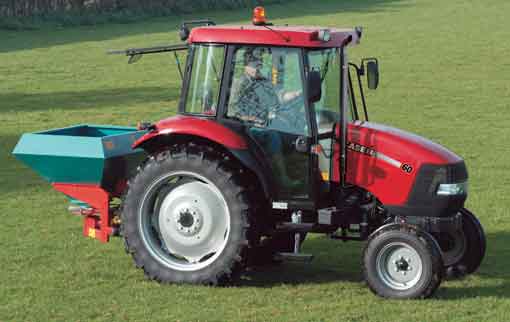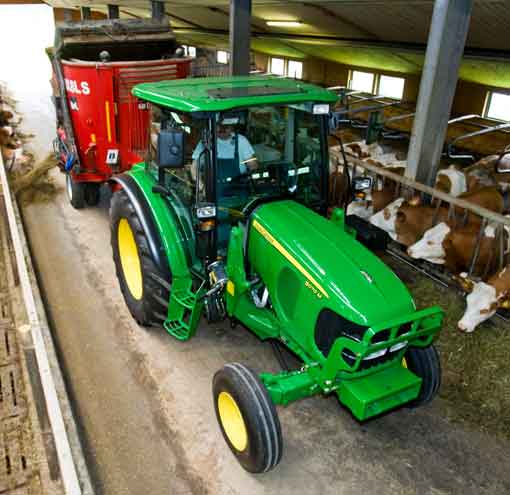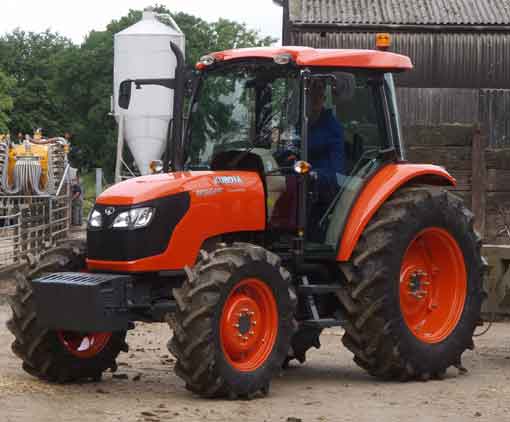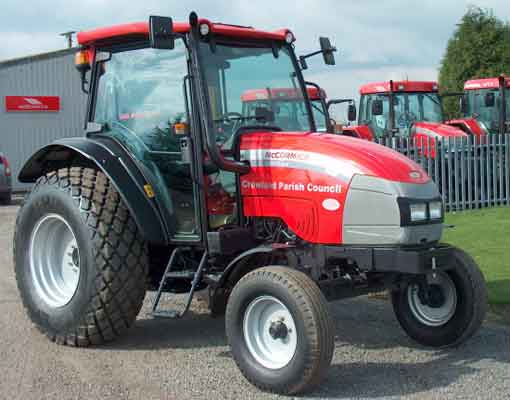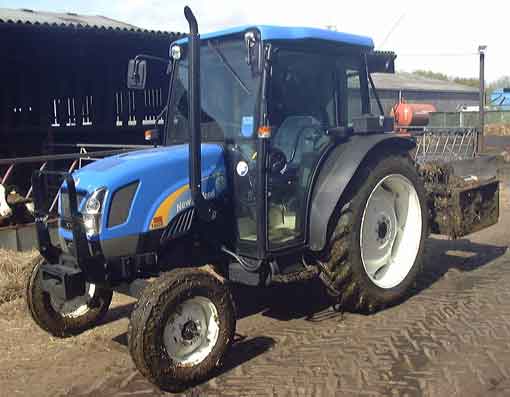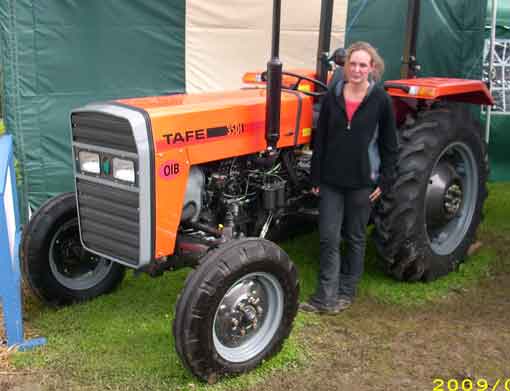So who uses two-wheel-drive tractors?

If you have a soft spot for two-wheel drive, the graph for sales of 2wd tractors doesn’t make happy viewing.
Last year new 2wd tractors registered in the UK by the leading suppliers totalled about 60 out of 15,013 tractor registrations for the year.
The figures, produced by the Agricultural Engineers Association, cover all the well-known companies that are AEA members. There are also some 2wds sold by non-members, including some from India (Tafe) and Korea (TYM and Kioti) but, although the numbers are not known, a relatively high proportion of these are likely to be 2wd.
At a guess the grand total could be 150 two-wheel-drive tractors, leaving 4wds and a few tracklayers with about 99% of the UK market last year.
And the future doesn’t look that bright, according to the AEA. Two-wheel drive registrations took another nosedive during the first three months of this year. The tractor market is down anyway, the association explains, but the reduction in the 2wds seems much steeper than in the rest of the market.
Why the fall? Four-wheel drive or a set of tracks are the obvious options for jobs needing efficient pulling power. Tests have shown that a four-wheel drive tractor delivers typically 10 to 15% more traction efficiency than a 2wd of similar power and weight, and for jobs such as ploughing that would mean a big increase in output.
The actual performance benefit from four-wheel drive is affected by factors such as ground conditions and tyre pressures, but in extreme conditions 4wd can make the difference between continuing to work or being forced to stop with a two-wheel drive model suffering from wheelslip.
The benefits of 4wd are certainly enough to explain its overwhelming success on tractors above about 100hp, the sector where most customers need at least some serious pulling power.
However for small tractors – those in the 60-100hp range – traction is not always the first consideration and other factors such as trimming the purchase price and improving the manoeuvrability may be more important.
This may apply to tractors used mainly for yard work on livestock farms, and all but the big acreage grassland farms or those on steep land usually have field jobs such as pasture topping and fertiliser spreading that suit a small 2wd tractor.
Orchards, vineyards and specialist production of some field-scale vegetable and salad crops are other examples of situations where small size and a sharp turning angle may be more important than peak pulling power.
The swing towards four-wheel drive on small tractors as well as big ones continues in spite of potential cost savings with 2wd. List price savings of 10-15% are available for customers choosing the 2wd version instead of four-wheel drive in the 60-100hp range and powered front wheels also cost more when the time comes for changing tyres, with replacement front tyres costing up to four times more than on an equivalent two-wheel drive model.
The 2wd sales slump has already persuaded some companies to pull out of this sector of the UK market. This applies so far mainly to the medium and larger power ranges where the 2wd market has virtually disappeared, but Kubota for one says it is no longer offering a 2wd specification in the small tractor sector.
One theory is that some small tractor customers may be choosing powered wheels front and rear simply because they are more readily available and in spite of the fact that a lower priced and more manoeuvrable 2wd model might suit their needs, but John Deere tractor specialist Gordon Day thinks this is unlikely.
“It may be happening in a very few cases, but the main reason why the demand for two-wheel drive is falling is because four-wheel drive offers more performance,” he said. “Small tractors are often used for loader work and I would always recommend four-wheel drive for a tractor fitted with a front-end loader. Some small tractors are also used as mowing tractors in the amenity sector and you need four-wheel drive for working on turf.
“One advantage of two-wheel drive is better manoeuvrability but improvements in the front axle design of many four-wheel drive tractors mean the difference is much less than it used to be,” said Mr Day.
Another problem for 2wd tractors is that the price advantage they enjoyed over equivalent four-wheel drive versions is shrinking. Tractors with non-powered front wheels need a special axle and other components and, as the sales volumes shrink the production costs for 2WD increase, and there is less of a price saving.
“The number of new two-wheel drive tractors sold in this country is now extremely small, but I can’t see any reason why the downward trend should not continue,” he said.
Case study Arthur Burbridge
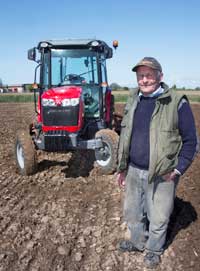 Good manoeuvrability is one of the top priorities for Kent farmer Arthur Burbridge (right), which is why he chose the two-wheel-drive version of the 69hp Massey Ferguson 3625 model when he needed a new tractor.
Good manoeuvrability is one of the top priorities for Kent farmer Arthur Burbridge (right), which is why he chose the two-wheel-drive version of the 69hp Massey Ferguson 3625 model when he needed a new tractor.
The main enterprise on Mr Burbridge’s Little Newlands Farm near Ramsgate is cauliflower production, but he also grows 25 acres of wheat, which is drilled and harvested by a contractor and acts as a break crop, and some small areas of grass are rented for grazing horses.
The new MF tractor is an addition to Mr Burbridge’s existing tractors, an elderly 2wd Ford 4610 and a 99hp New Holland TL100A with four-wheel drive.
All the tractors work mainly on cauliflower production and the new MF tractor will be used with a semi-automatic two-row planter and a steerage hoe built originally for a little grey Fergie tractor. One of the biggest jobs for the new 2wd will be bringing trailer-loads of cauliflowers into the yard where turning space is restricted.
The new tractor was ordered on 20 October last year and Mr Burbridge was warned delivery would be delayed because the small demand for 2wd models means they are built in batches when sufficient orders are in hand. A February/early March delivery estimate passed and it was late April when it arrived.
“I was a bit surprised that I had to wait such a long time, although it did not matter too much as I still had the other tractors available,” he said. “The problem seems to be that not many people are buying two-wheel-drive tractors, which is bad luck if you really need two-wheel drive.”

